
Nutritionist explains how women can eat to help balance hormones
Some healthy eating principles apply to just about everyone – drinking enough water and consuming plenty of fresh fruit and veg, for example. But when it comes to hormones, a lot of diet advice neglects to mention the vast difference between women’s and men’s health. “Women are very under-represented in research, mainly because we have a menstrual cycle,” says functional nutritionist and author Pauline Cox. “My passion and mission is to empower women with the information and knowledge that can radically change their immediate health and their long-term health.” Cox, 43, who started her career as a physiotherapist before becoming a nutritionist, now mainly works with groups of women online and has just released her second book, Hungry Woman: Eating for Good Health, Happiness and Hormones. “I felt there was a lot of information that could be shared with women to help them understand their hormones, and understand that we don’t have to get frustrated with ourselves and fight our female physiology.” At the heart of the issue is the balance (or lack thereof) between oestrogen and progesterone levels. “When our progesterone levels are low, our oestrogen can become dominant, and that’s when we start to see things like PMS, heavy periods, painful periods, flooding at the beginning of our periods,” says Cox, who lives in Somerset. “A lot o women accept that as part of their monthly cycle, but when we bring our progesterone levels back up, it helps to balance the effect of oestrogen.” Here, she explains five ways women can tailor their diets to keep their hormones in check… 1. Look after your liver “Oestrogen is a driving-growth hormone,” Cox explains, using the analogy of grass growing on a lawn to explain how the two hormones interact. “Progesterone is like the lawnmower. It comes along and it keeps the grass in check. When we lose progesterone, oestrogen gets out of control.” That’s why it’s important that our bodies are able to clear oestrogen efficiently through the liver, gut and bowels. “How much oestrogen we clear can be influenced by what we eat and how we live,” says Cox. “There’s a lot of cruciferous in the book – cauliflower, broccoli, these are really great vegetables to support liver detoxification.” 2. Add fermented foods To deliver beneficial bacteria to your gut, try including fermented foods like pickled vegetables, kefir, kombucha or natural yoghurt as part of your daily diet. “Our gut diversity declines as we age and microbiome diversity has been linked with longevity and good health,” says Cox, who suggests just a tablespoon of sauerkraut a day can make a difference. “These are easy wins…to maximise our longevity and optimise our gut-brain axis, which is incredibly important.” 3. Avoid ultra-processed foods There’s been a lot of talk recently about how detrimental ultra-processed foods are, and that includes the effect on hormone levels. “When we’re eating high sugar, processed foods, our inflammatory levels go up and our cortisol level goes up, which robs us of progesterone,” Cox says. Plus, filling up with these empty calories – as delicious as they often are – means we have less room for nutritious foods. “They can often be devoid of nutrients, so you’re not getting the nutrients you need for building hormones and supporting hormonal health like magnesium, zinc, B vitamins, and omega three fatty acids.” 4. Create an eating window It’s not just what you eat, it’s when. Cox recommends having an ‘eating window’ during the day that ends around 6pm, so that there’s a gap of a few hours before you go to bed. “When your blood sugars go up at night, your kidneys have to kick in to try and remove this excess blood sugar, which then means you’re up in the night urinating,” she says. “A lot of women associate this with drinking a lot before bed, but actually eating late at night can also be for that reason.” Choosing meals that are nutritious and satisfying is the next step. “Within that window, start becoming a bit more conscious of your carbs and upping your protein,” she continues. “So you’re feeling full, your body’s getting all the amino acids it needs, and you’re maybe not having so much of the grab-and-go food like the sandwiches, the pasta, the crisps.” 5. Monitor your magnesium “Most women are sub-clinically deficient in magnesium,” Cox explains, which can cause insomnia, and the risk increases with age. “As we get to about the age of 40, we absorb less magnesium than we would have in our 20s.” Diet also plays a role: “If we have high blood sugars and levels of inflammation when we’re stressed, we lose magnesium.” She recommends taking a magnesium glycinate or bisglycinate supplement before bed to increase your chance of getting a good night’s sleep. “The glycine part of that helps to reduce your core body temperature, which is what the body wants when it’s going to bed,” she says. “That compound also helps get you into what’s called REM sleep, which is the sleep where you’re consolidating memories and learning.” Hungry Woman by Pauline Cox is published by Ebury Press, priced £27. Photography by Luke Albert. Available Now. Read More From hairdressers to aloe vera: What will Diet Coke join as a ‘possible cancer risk’ Charity boss speaks out over ‘traumatic’ encounter with royal aide Ukraine war’s heaviest fight rages in east - follow live
2023-06-30 22:53
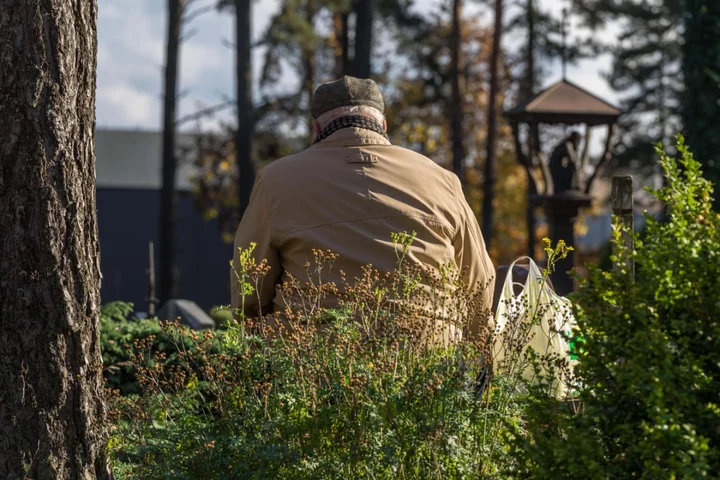
Being lonely ‘may increase risk of heart disease in diabetes patients’
Being lonely may the increase risk of heart disease in diabetes patients, research suggests. Scientists have found loneliness to be a bigger risk factor for coronary heart disease – a condition where the blood vessels supplying the heart are narrowed or blocked – than diet, exercise, smoking and depression. The researchers said their findings, published in the European Heart Journal, highlight the importance of meaningful social relationships to stay healthy. Study author Professor Lu Qi, of Tulane University School of Public Health and Tropical Medicine in New Orleans, said: “The quality of social contact appears to be more important for heart health in people with diabetes than the number of engagements “We should not downplay the important of loneliness on physical and emotional health. “I would encourage patients with diabetes who feel lonely to join a group or class and try to make friends with people who have shared interests.” For the study, the researchers looked at data from the UK Biobank – an online database of medical and lifestyle records from more than half a million Britons – involving more than 18,000 adults aged between 37 to 73. These people had diabetes but no heart disease at the start of the decade-long study. The researchers used questionnaires to assess loneliness and other factors that may affect relationships such as body mass index (BMI), physical activity, diet, alcohol, smoking, and medications, blood pressure, cholesterol and control of blood sugar. The findings suggest that asking patients with diabetes about loneliness should become part of standard assessment, with referral of those affected to mental health services Prof Lu Qi Over the course of more than 10 years, more than 3,000 people developed heart disease, which included coronary heart disease or stroke. The researchers found those who scored the highest in loneliness had a 26% greater risk of heart disease, compared to people with lower scores. The team also found loneliness to be a bigger risk factor for heart disease than diet, exercise, smoking and depression – but showed a weaker influence when compared to kidney function, cholesterol and BMI. Professor Qi said: “Loneliness ranked higher as a predisposing factor for cardiovascular disease than several lifestyle habits. “We also found that for patients with diabetes, the consequence of physical risk factors (ie poorly controlled blood sugar, high blood pressure, high cholesterol, smoking and poor kidney function) was greater in those who were lonely compared to those who were not.” “The findings suggest that asking patients with diabetes about loneliness should become part of standard assessment, with referral of those affected to mental health services.” Read More Charity boss speaks out over ‘traumatic’ encounter with royal aide Ukraine war’s heaviest fight rages in east - follow live 7 ways to save money on your hair Sarcoma Awareness Month: What you need to know about these cancers Bjork’s controversial swan dress to go on display in new exhibition
2023-06-30 16:18

Sarcoma Awareness Month: What you need to know about these cancers
Although most people have heard of sarcomas, research suggests the majority don’t really know what they are. A study by Sarcoma UK found 75% of people didn’t know what a sarcoma was – but there’s no better time than July’s Sarcoma Awareness Month to learn. Sarcomas are rare cancers that can either form in the bones or soft tissues that connect, support and surround other body structures and organs, explains Sarcoma UK. “If you’ve never heard of sarcoma before, you’re not alone,” says Dr Sorrel Bickley, director of research, policy and support at Sarcoma UK. “Sarcoma can affect any part of the body, on the inside or outside, including the muscle, bone, tendons, blood vessels and fatty tissues.” She says around 15 people are diagnosed with sarcoma cancer every day in the UK, and stresses: “It can affect anyone, at any age, and it’s vital that healthcare professionals can recognise its signs and symptoms.” During Sarcoma Awareness Month the charity is running a campaign called Does Size Matter?, in a bid to draw attention to the fact that a lump getting bigger is a key sign of sarcoma. “Most lumps and pains won’t be sarcomas, but it’s important to keep an eye on symptoms and to seek medical help if you’re worried,” stresses Bickley, who explains that many patients tell the charity it’s taken a long time for them to get a correct diagnosis. She adds: “Many people don’t consider their symptoms might be serious. Delays cost lives, and people have a better chance of surviving sarcoma if their cancer is diagnosed early. ” There are around 100 different subtypes of sarcoma, grouped into soft tissue sarcomas and bone sarcomas, and Bickley explains: “Soft tissue sarcomas may not have obvious symptoms in the early stages when the tumour is very small. The symptoms can become more obvious as the sarcoma grows, but this can depend on where in the body it’s found. ” She says there are several main sarcoma symptoms to be aware of… A lump that grows or changes Bickley says sarcoma is a “complicated cancer”, but the most common symptom is a lump, which could be anywhere on the body – including the arm or leg. “Most lumps aren’t harmful and a lump that isn’t getting bigger, isn’t causing any pain, or that has been there for a long time isn’t likely to be anything to worry about,” she says. “But if it’s growing quicky or measures more than five centimetres – about the size of a golf ball – then you should get it checked by your GP.” Swelling or pain in or around a bone Sarcoma cancer can also start in a bone – the most common symptoms are unexplained pain or tenderness around a bone, which may come and go and may be worse at night, explains Bickley. “If the pain is getting worse and doesn’t go away with rest or at night, you should go and see your GP to get it checked,” she advises. Stomach pain, feeling sick and loss of appetite Some forms of sarcoma – known as a gastrointestinal stromal tumours, or GISTs – can start in the gastrointestinal tract. “With this type of sarcoma, people most often experience symptoms like fatigue, anaemia, weight loss, feeling sick or discomfort around their stomach,” Bickley says. Blood in poo or vomit Noticing blood in your poo or vomit can also be a sign of a gastrointestinal stromal tumour, says Bickley, who adds: “There are lots of causes for blood in poo or vomit, but it needs to be checked by a medical professional.” For more information or advice about sarcoma, call the Sarcoma UK support line on 0808 801 0401, email supportline@sarcoma.org.uk, or text 07860 058830 to contact a specialist adviser. Read More Charity boss speaks out over ‘traumatic’ encounter with royal aide Ukraine war’s heaviest fight rages in east - follow live Bjork’s controversial swan dress to go on display in new exhibition Chrissy Teigen welcomes fourth child – how does surrogacy actually work? 11 ways to work the colour clash trend at home
2023-06-30 14:47

Over-30s eye Australia gap year as age limit raised
Australia extends the age limit to 35 for Brits who want to live and work down under.
2023-06-30 07:15

Influencer Tammy Hembrow angers fans by tanning in bikini weeks after having skin cancer removed
A popular fitness influencer has angered fans after posting photos of herself tanning in the sun just weeks after revealing she’d had a skin cancer lesion removed from her leg. Earlier this month, Tammy Hembrow, an Australian-based YouTuber, issued a reminder to her followers about the importance of annual skin cancer screenings in a video posted to TikTok. In the video, the 29-year-old revealed that she’d recently had a “chunk” of her leg removed after doctors identified melanoma, the deadliest form of skin cancer. “Okay so I want to show you guys the chunk they had to take out of my leg because of the melanoma that I have,” Hembrow began the video, before explaining that the week earlier she’d had to get a “skin cancer cut out of my leg”. “It was melanoma, which spreads very quickly and is very dangerous [and] can be very deadly if it spreads,” Hembrow continued, while noting that the mole in question had been “tiny” and “did not look suspicious to [her] at ALL”. In the video, Hembrow informed her followers that she was waiting for confirmation from her doctor that they’d “got it all,” with the influencer noting that she was “very hopeful that they did”. Hembrow then expressed her relief that she’d gotten a skin cancer screening, before urging her fans to “get regular skin checks”.“I am so so so lucky that I went and got my skin checked. Please get regular skin checks, it can honestly be life-saving,” she continued. In the TikTok, the influencer then admitted that, despite spending a lot of time in the sun, she rarely wears sunscreen. However, she said she is “absolutely regretting that now,” as she revealed that the skin cancer scare has “changed [her] outlook on everything”. @tammyhembrow Go book that skin check rn guys ? ♬ original sound - Tammy Hembrow According to the Mayo Clinic, melanoma, the most serious type of skin cancer, “develops in the cells that produce melanin, the pigment that gives your skin its colour”. “Exposure to ultraviolet radiation (UV) radiation from sunlight or tanning lamps and beds increases your risk of developing melanoma,” the health organisation states, while noting that melanomas “most often develop in areas that have had exposure to the sun, such as your back, legs, arms and face”. After revealing that she never thought she’d develop melanoma, and admitting that she felt “very silly for that now,” Hembrow showed her followers the two-inch stitched incision behind her knee where the melanoma had been removed. Hembrow is now facing anger and concern from her fans, just weeks after sharing the skin cancer warning, after posting photos of herself tanning in the sun. In the pictures, which the influencer posted to Instagram on Tuesday, she could be seen wearing a patterned yellow bikini as she posed on a sun lounger while sitting outside in the sun. In the photos, Hembrow could also be seen wearing the bandage on her leg where the melanoma lesion had been removed. “OMG, you just had a melanoma removed and are sunbathing,” one person commented under the photos, while another said: “You’re another type of thick if you’re sunbathing after just having a melanoma removed.” “Literally still has the bandage on from having a melanoma removed and now posting photos of herself suntanning. It’s like she wants to get skin cancer?” someone else wrote. However, Hembrow has since defended herself from the backlash in the comments, where she claimed that she was “in the sun for 15 minutes” and that it’s “silly” to think she can “never go in the sun in a bikini again”. “Was in the sun for 15 minutes. It’s also winter here and I don’t go in the sun without sunscreen anymore,” Hembrow wrote in response to one critic. “Alsooo, I am still very much going to go in the sun, to the beach, to the pool, or even if I just want to read a book for 15 minutes in the sun etc. “Just always going to wear SPF and not be out in the hottest hours with no protection like I used to. People are silly if they think I can never go in the sun in a bikini again…” According to The Skin Cancer Foundation, regular daily use of SPF 15 sunscreen can “reduce your risk of developing squamous cell carcinoma (SCC) by about 40 per cent, and lower your melanoma risk by 50 per cent”. However, skin cancer charity Cancer Research UK notes that individuals who have been diagnosed with melanoma are at a higher than average risk of developing the skin cancer again in the future. The Independent has contacted Hembrow for comment. Read More Sarah Ferguson reveals she almost skipped doctor’s appointment that led to cancer diagnosis Best sunscreen for your face 2023: Daily SPF protection, from sensitive to non-greasy formulas Khloe Kardashian says what she thought was a zit turned out to be melanoma
2023-06-30 04:15

Pete Davidson reportedly enters rehab amid mental health struggles
Pete Davidson has reportedly checked into a rehabilitation center amid ongoing struggles with his mental health. The Saturday Night Live alum, 29, is receiving treatment for his previously diagnosed borderline personality disorder and post-traumatic stress disorder, Page Six initially reported. According to People, sources said Davidson “should be getting out” of the in-patient treatment center “pretty soon”. “Pete will often check himself into rehab to work on these issues,” another source told the outlet. “His friends and family have been supportive during this time.” Davidson has previously been open about his mental health struggles. In 2017, the King of Staten Island actor shared he had been diagnosed with borderline personality disorder (BPD) during an appearance on the WTF With Marc Maron podcast. He explained that he had checked into a rehabilitation center in December 2016 after struggling with symptoms of the disorder. “I started having these mental breakdowns where I would, like, freak out and then not remember what happened after. Blind rage,” the comedian said, noting that he originally thought smoking weed caused his extreme mood swings. He stopped smoking weed and entered rehab, though he resumed the habit and soon had a “really bad mental breakdown”. Davidson was eventually diagnosed with BPD several months later. “I found out I have BPD, which is borderline personality disorder,” he said. “One of my psychiatrists… He was always saying before this big meltdown, ‘You’re probably bipolar or borderline, we’re just going to have to figure it out.’” The Bupkis star also admitted that he was “depressed all the time” but praised therapy for improving his mental health. “It is working, slowly but surely,” he said. “I’ve been having a lot of problems. This whole year has been a f***ing nightmare. This has been the worst year of my life, getting diagnosed with this and trying to figure out how to learn with this and live with this.” That same year, he went on SNL’s “Weekend Update” to further discuss his diagnosis and urge others to seek medical treatment if they think they have depression. “As some of you may know, I was recently diagnosed with borderline personality disorder — a form of depression,” Davidson told viewers. “Depression affects more than 16 million people in this country and there’s no cure, per se. But for anyone dealing with it, there are treatments that can help. “First of all, if you think you’re depressed, see a doctor and talk to them about medication. And also be healthy: eating right and exercise can make a huge difference.” Bipolar personality disorder (BPD) is a type of a mental disorder characterised by unstable moods, behaviour, and relationships. It’s estimated that 1.6 per cent of the US population have BPD. In an interview with Variety in 2019, Davidson shared that he’s been “in and out of mental health facilities” since he was nine years old. His father, Scott Matthew Davidson, was a firefighter who died at the World Trade Center during the September 11 attacks in 2001, when Davidson was just seven. Speaking with Jon Bernthal on his Real Ones podcast last March, Davidson said that the event had an impact on his “fear of abandonment” as well as his PTSD. More recently, he underwent “trauma therapy” in April 2022 due to online harassment from Kanye West while Davidson was dating West’s ex-wife Kim Kardashian. “The attention and negativity coming from Kanye and his antics is a trigger for [Pete], and he’s had to seek out help,” a source told People at the time. Pete Davidson’s latest stint in rehab comes after he was charged with reckless driving in connection with a Beverly Hills car accident, in which he and current girlfriend Chase Sui Wonders crashed into the side of a house. He was reportedly driving in the affluent Los Angeles neighbourhood when his vehicle went over the curb, hitting a fire hydrant and collided into the home. He is expected to be arraigned in court on 27 July. The Independent has contacted Pete Davidson for comment. Read More Pete Davidson charged with reckless driving in connection with Beverly Hills car crash Pete Davidson opens up about borderline personality disorder diagnosis: ‘The weight of the world feels lifted’ Pete Davidson says he learned his firefighter dad died on 9/11 while watching TV
2023-06-30 00:49
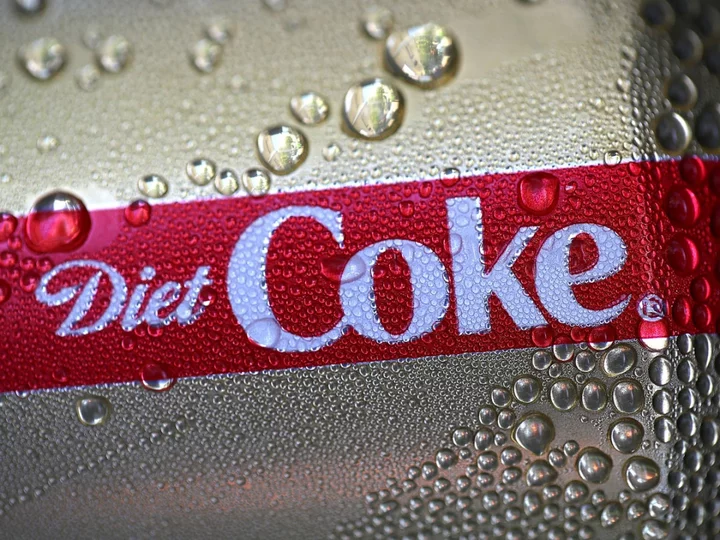
Diet Coke fanatics react to forthcoming WHO announcement on ‘possibly cancerous’ aspartame: ‘The final straw’
Fans of Diet Coke have reacted with despair at reports that the World Health Organisation (WHO) may catagorise aspartame – an artificial sweetener in the drink – a potential carcinogen. It was reported on Thursday (29 June) that the health organisation’s cancer research unit, the International Agency for Research on Cancer (IARC), is preparing to label aspartame as potentially cancerous from July. Aspartame is a low-calorie artificial sweetener that is approximately 200 times sweeter than sugar and is used in a huge number of soft drinks, including Diet Coke, Pepsi Max, Diet Irn Bru, and Sprite Zero, among others. It is also used in foods such as chewing gum, candy, breakfast cereal, frozen desserts and puddings, and gelatins. Although the IARC’s ruling on the sweetener remains confidential until July, Diet Coke fans are already wondering if they might have to give up their favourite fizzy drink. “If they interfere with Diet Coke it will be the final straw for me I’m afraid,” one person warned. Another joked they have already “drunk the Diet Coke equivalent of swimming at a superfund site” in their lifetime. “You can take away my Diet Coke when you pry it out of my cold dead hands,” a third mordantly added. “Listen, if you’re going to take away Diet Coke from us, you better be prepared for 72 per cent of women aged 25-45 to quit their jobs,” another person claimed. “That’s all I’m saying. *Cracks open third Diet Coke before noon*” Others appeared smug that they had never switched from regular full-fat Coke – which contains around 10.6g of sugar per 100ml, equating to 35g per 330ml can – to the low-sugar version. One person referred to a scene from hit series Friends that showed Chandler (Matthew Perry) shouting: “I knew it!” Another said: “I told you all that Diet Coke was just as bad as regular Coke.” The IARC is expected to make its decision over aspartame public on 14 July, the same day as the Joint WHO and Food and Agriculture Organisation’s Expert Committee on Food Additives (JECFA), which is also reviewing aspartame use this year. JECFA has said it is safe to consume aspartame within accepted daily limits since 1981. An adult weighing 60kg (132 pounds) would have to drink between 12 and 36 cans of diet soda every day to be at risk, a view widely shared by national regulators. The additives committee “conducts risk assessment, which determines the probability of a specific type of harm (eg., cancer) to occur under certain conditions and levels of exposure”. The review of aspartame comes after a study conducted by experts from the French National Institute for Health and Medical Research, and Sorbonne Paris Nord University, published on March 2022, claimed it could increase the risk of cancer in people who consume it. But previous large-scale studies on humans have not revealed similar associations. A separate study published last December found that aspartame was linked to anxiety in mice. The deputy chief scientific adviser of the UK’s Food Standards Agency, Rick Mumford, commented on reports and said: “Our view is that the safety of this sweetener has been evaluated by various Scientific Committees and it is considered safe at current permitted use levels. “The IARC report has not yet been published and, when it is, it will be examined by the JECFA, who will put together a risk assessment by the end of July. We will closely study JECFA’s report and decide whether any further actions are needed.” The Independent has contacted Coca-Cola for comment. Read More Walk this way... but not like that: How men’s walks became sexualised Colleen Ballinger: Everything we know about the ‘grooming’ allegations against YouTuber Miranda Sings Kevin Costner’s estranged wife says she’ll move out of their $145m home on one condition ‘My small rash turned out to be a parasite living in my leg after a beach trip’ Chrissy Teigen welcomes fourth child – how does surrogacy actually work? Heart disease digital check-ups for over 40s being rolled out
2023-06-29 23:50
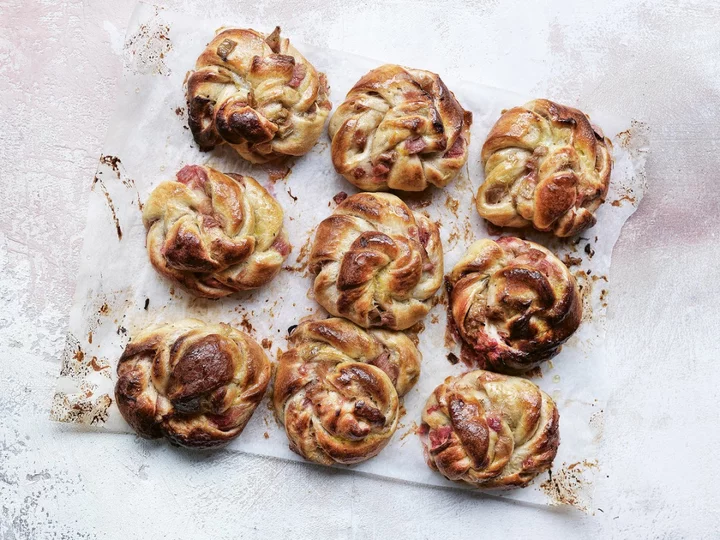
Rhubarb sticky buns for an idyllic Scandinavian afternoon tea
In Scandinavia, we are famous for our cinnamon and cardamom buns, made with a soft, yeasty dough,” says Trine Hahnemann, author of Simply Scandinavian. “I decided to try them with rhubarb in place of the spices, since it is a local vegetable for me. Just like the original, these buns are soft, sweet and sticky.” Rhubarb sticky buns Makes: 14-16 Ingredients: For the buns: 300g rhubarb 100g caster sugar 50g fresh yeast, or 10g fast-action dried yeast 200ml lukewarm whole milk 100g full-fat crème fraîche 1 egg, lightly beaten 650g strong white flour, plus more to dust 1 tsp sea salt flakes 100g salted butter, softened For the filling: 100g salted butter, softened 50g caster sugar 100g marzipan, grated Method: 1. Cut the rhubarb into one-centimetre pieces, place in a saucepan with 50 grams of the sugar and bring to the boil. Cook for five minutes, then drain through a sieve placed over a heatproof bowl. Return the juice to the pan, bring to the boil once more and cook down until you have a syrup. Leave to cool. 2. Dissolve the yeast in the lukewarm milk in a bowl, then stir in the crème fraîche and egg. Next, mix in the flour, the remaining 50 grams of sugar and the salt. Knead the butter, little by little, into the dough, then knead well on a floured work surface until smooth. 3. Put the dough in a bowl, cover with a tea towel and let it rise for one to two hours, or until doubled in size. 4. Make the filling by mixing the butter, sugar and marzipan into a smooth paste. 5. Line some baking sheets with baking parchment. 6. Tip the dough out on to a floured work surface and roll it into a rectangle measuring about 40 x 30 centimetres. Spread the filling evenly over half the dough, then arrange the cooked rhubarb pieces on top of the filling. Fold the plain side over the filled side, then cut across into two-centimetre strips. 7. Take each strip and twist it, then roll each twist into a spiral. 8. Place the rhubarb buns on the prepared trays, pressing down on each so they spread slightly. Cover and leave to rise for 30 minutes. 9. Preheat the oven to 180C/350F/gas mark 4. 10. Bake the pastries for 25-30 minutes, then remove from the oven and brush with the rhubarb syrup. Leave to cool on a wire rack before serving. ‘Simply Scandinavian’ by Trine Hahnemann (Quadrille, £27). Read More Budget Bites: Three light recipes that sing of summer What the hell is Scandinavian food? Lighter fish pie: Comfort food you won’t feel guilty for eating How to make Norwegian potato pancakes Three quick and easy plant-based fakeaways to create at home The Union Rye, review: Finally, a decent restaurant in this charming East Sussex town
2023-06-29 21:20
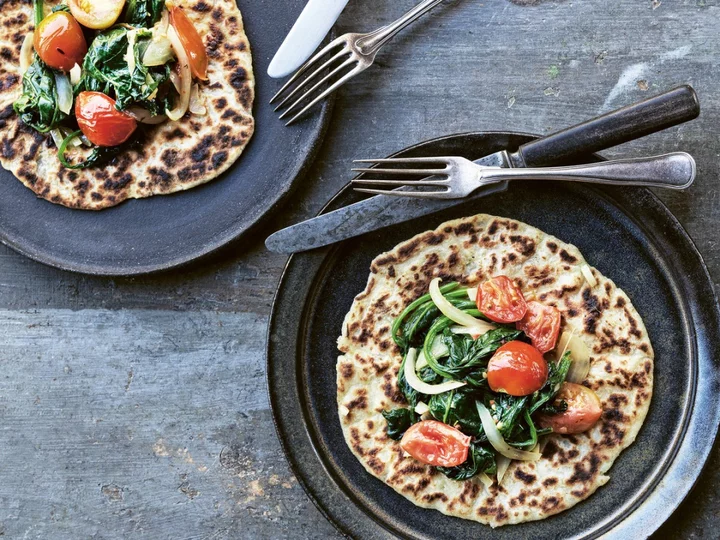
How to make Norwegian potato pancakes
A Norwegian tradition at weddings. In the old days, in small towns in Norway, all the women would gather together to make really big potato pancakes to be eaten at wedding breakfasts!” says Trine Hahnemann, author of Simply Scandinavian. “This recipe takes a little planning because you need to prepare the potatoes the day before to allow their starch to settle, in order to be able to roll out the dough.” Potato pancakes Makes: 10 Ingredients: For the pancakes: 500g peeled potatoes 50g salted butter 50g full-fat crème fraîche 1 tsp sea salt flakes 175g plain flour, plus more to dust Freshly ground black pepper For the topping: 200g spinach 4 tomatoes 1 onion, sliced 1-2 tbsp salted butter 2-3 tbsp full-fat crème fraîche Method: 1. The day before you want to make the pancakes, boil the potatoes until tender. Drain them, then pass through a potato ricer into a bowl and add the butter, crème fraîche and salt, with some pepper. Mix well, then cover and refrigerate overnight. 2. Next day, mix the flour into the potato mixture and divide the dough into 10. Roll each piece out on a floured work surface into a circle 12 centimetres in diameter. Cook each one in a dry frying pan, turning it once. You will know they are ready when they are light brown on both sides, which will take two to three minutes on each side. 3. For the topping, rinse the spinach in cold water and drain well; it may take several rinses to get it properly clean. Cut the tomatoes in half and discard the juice and seeds, then slice them. Sauté the onion in the butter until golden brown, then add the spinach and wilt it, seasoning to taste with salt and pepper. Turn the heat off, add the tomatoes and mix. 4. Serve the warm pancakes topped with the vegetables, with crème fraîche on the side. ‘Simply Scandinavian’ by Trine Hahnemann (Quadrille, £27). Read More Budget Bites: Three light recipes that sing of summer What the hell is Scandinavian food? Lighter fish pie: Comfort food you won’t feel guilty for eating Three quick and easy plant-based fakeaways to create at home The Union Rye, review: Finally, a decent restaurant in this charming East Sussex town Missing Glastonbury? Here’s how to have a festival feast at home
2023-06-29 19:17

Japan Hopes 30,000 Teenagers Want to Learn to Make Electric Batteries
In response to growing demand for electric battery production, Japan is attempting to train tens
2023-06-29 18:20

Lighter fish pie: Comfort food you won’t feel guilty for eating
The ultimate comfort food, but also light; this recipe manages to be creamy and filling without you having to take a nap afterwards, which can be the case with heavier meat dishes,” says Trine Hahnemann, author of Simply Scandinavian. “It can be made with any fish, or also with the same weight of vegetables instead. This kind of pie will always do it for me when I’m in need of energy and comfort.” Fish pie Serves: 6 Ingredients: 800g large potatoes, chopped into big chunks 100g salted butter, plus 3 tbsp, plus more for the dish 500g firm white fish fillet, chopped into small pieces 300g raw prawns, sustainably caught 10 white asparagus spears 10 green asparagus spears 2 shallots, finely chopped 200g shelled fresh peas 5 dill sprigs, chopped Sea salt flakes and freshly ground black pepper Leaves from 2-3 sprigs of flat-leaf parsley, chopped, to serve (optional) Method: 1. Boil the potatoes in water until tender. 2. Butter a large ovenproof dish generously, then add the chopped fish and prawns in an even layer. Season with salt. 3. Snap the lower one-third of the white and green asparagus off, then peel the white asparagus until shiny and cut all the asparagus spears into four-centimetre pieces. (The trimmings and peelings can be used in soup). Fry the shallots gently in a frying pan in one tablespoon of butter. Turn off the heat, add the asparagus, peas and dill, mix well and season with salt and pepper. Arrange the vegetable mixture on top of the fish. 4. Preheat the oven to 200C/400F/gas mark 6. When the potatoes are cooked, drain them, reserving 100 millilitres of their cooking water. Mash the potatoes lightly together with the reserved cooking water and the 100 grams of butter, keeping the mash chunky. Season to taste with salt and pepper, then spread the mash over the pie filling and place the remaining two tablespoons of butter, in small dots, on top. 5. Bake for 30 minutes. Let it rest for a few minutes, then scatter with parsley and serve. ‘Simply Scandinavian’ by Trine Hahnemann (Quadrille, £27). Read More Budget Bites: Three light recipes that sing of summer What the hell is Scandinavian food? Three quick and easy plant-based fakeaways to create at home The Union Rye, review: Finally, a decent restaurant in this charming East Sussex town Missing Glastonbury? Here’s how to have a festival feast at home Four berry sweet recipes that go beyond strawberries and cream
2023-06-29 17:25
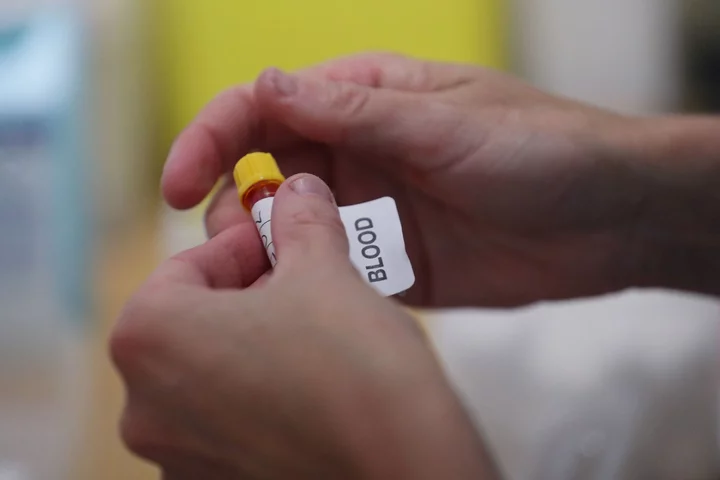
Heart disease digital check-ups for over 40s being rolled out
People over 40 in England will be sent a blood test to carry out at home in a bid to reduce heart disease and obesity. Digital NHS health checks, which will also include an online health questionnaire, will be launched next spring for people aged 40 to 74. Around 15 million people will be eligible, with around one million online checks expected to be carried out over the next four years. Health and Social Care Secretary Steve Barclay said: “Thousands of heart attacks and strokes could be prevented every year through simple health checks, which could save lives and ease pressure on the NHS. “This new digital check-up will mean people can do simple tests and get tailored advice from homes while reducing pressure on GP services.” The home blood test will check cholesterol levels with patients asked to take a blood pressure test at a pharmacy, alongside the online assessment covering details such as weight, height, diet, alcohol intake and exercise levels. Results will be made available online with help available to anyone showing early signs of issues such as diabetes or heart disease, as well as referrals to weight-loss clinics or medication. The online questionnaire will be available via phone, tablet or computer and the Government believes each check will save 20 minutes of NHS time. This could play an important role in helping people live healthier for longer and saving lives in the coming years, while reducing pressure on the NHS Professor Sir Nilesh Silemani Cardiovascular disease is the second biggest killer in England, affecting around 6.4 million people. The Government says the new digital check will help to identify 200,000 people who could benefit from the use of statins, 30,000 cases of hypertension and prevent around 400 heart attacks and strokes over the first four years. Professor Sir Nilesh Samani, medical director at the British Heart Foundation, said: “This initiative will help to reach more people and encourage them to get their blood pressure and cholesterol levels checked so that, where necessary, healthcare professionals can work with them to manage their condition. “This could play an important role in helping people live healthier for longer and saving lives in the coming years, while reducing pressure on the NHS.” Existing NHS health checks for people in the same age group take place face-to-face with a GP and concerns have been expressed that elderly people are not left behind if they struggle with technology. David Baines, vice chair of the Local Government Association, told The Times: “Making more digital health checks available is a useful tool to detect certain illnesses but it should be treated as an addition to, not a replacement for, a physical health check.”
2023-06-29 16:15
